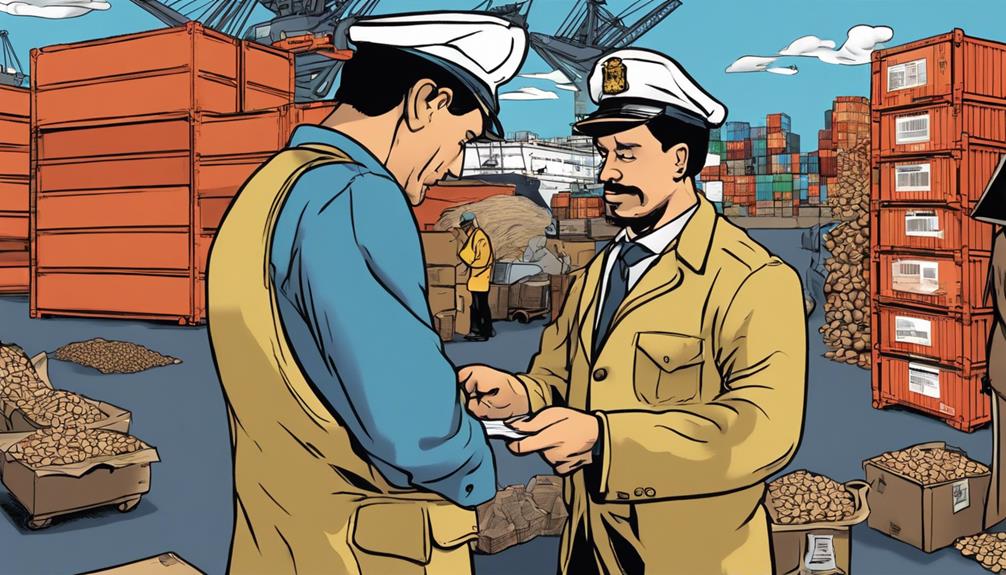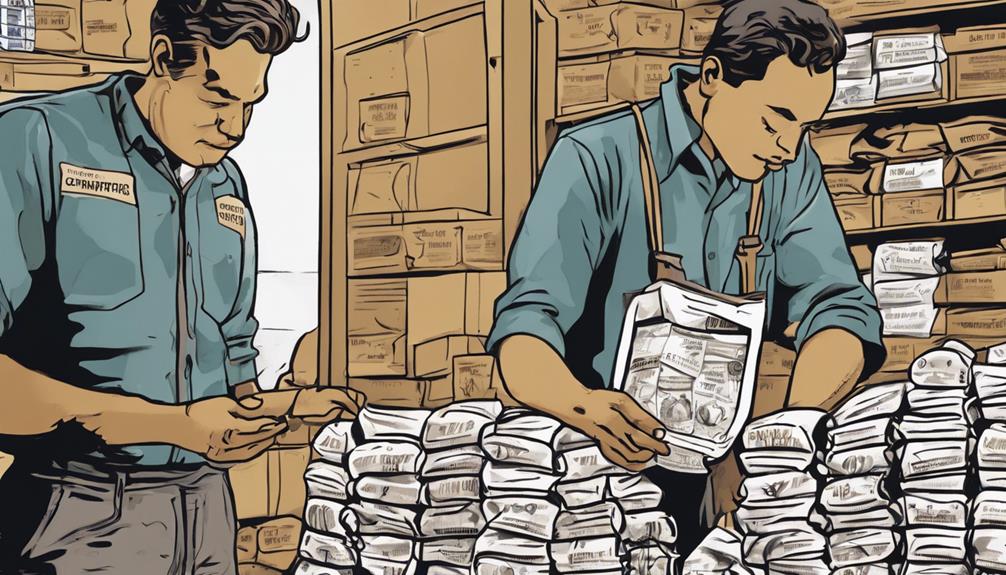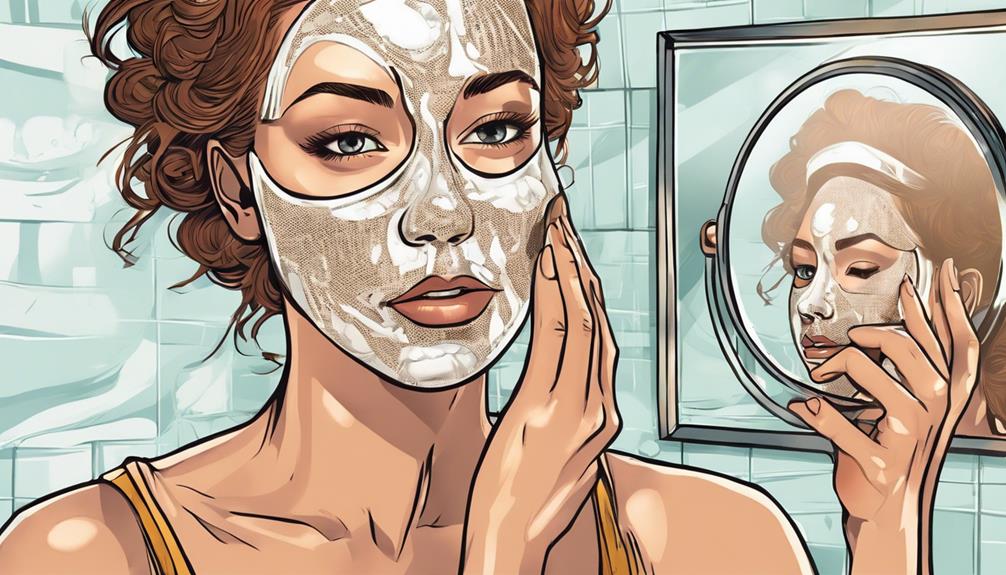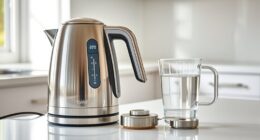To become a coffee importer, you must grasp intricate regulations, build strong supplier relationships, secure necessary licenses, develop effective marketing strategies, manage logistics, work with customs brokers, and carefully assess import costs. It is important to understand coffee import rules, source high-quality beans, maintain relationships with global suppliers, obtain crucial permits, and effectively market your brand. Ensuring smooth shipment logistics, customs clearance, and cost management are key factors for successful importing. Mastering each of these elements is critical for your entry into the coffee importing industry!
Key Takeaways
- Research suppliers for certifications and reputation.
- Visit coffee farms to understand growing conditions.
- Obtain necessary licenses and permits.
- Establish strong supplier relationships.
- Understand import regulations and customs processes.
Understanding Coffee Import Regulations
Understanding coffee import regulations is necessary for anyone looking to venture into the coffee importing business. When importing coffee into the USA, you'll encounter various government agencies such as the US Department of Agriculture (USDA), Food and Drug Administration (FDA), and Customs and Border Protection (CBP).
CBP mandates that coffee imports must have clear Country of Origin markings. Additionally, an Importer Security Filing (ISF) needs to be submitted at least 48 hours before the coffee's departure. Both the FDA and USDA require inspections to guarantee compliance before the coffee can be cleared for entry. It's essential to adhere to FDA Prior Notice Filing requirements and apply for USDA permits to import coffee successfully.
Furthermore, understanding import duties and other relevant rules and regulations is crucial to avoid any complications during the importing process. Familiarizing yourself with these key aspects will help streamline your coffee importing operations and guarantee compliance with the necessary authorities.
Sourcing Quality Coffee Beans

To guarantee the quality of the coffee beans you import, thoroughly research potential suppliers' certifications, reputation, and customer reviews.
When sourcing coffee beans, conducting taste tests is essential to assess the flavor profiles and overall quality offered by different suppliers. Additionally, visiting coffee farms allows you to gain insight into the growing conditions, harvesting practices, and sustainability initiatives of potential suppliers.
During the sourcing process, negotiations play a key role in securing favorable pricing, terms, and delivery schedules with chosen suppliers. Building strong relationships with coffee suppliers abroad is vital for establishing a reliable and sustainable source of high-quality coffee beans.
Building Supplier Relationships Abroad

Researching potential suppliers' history, reputation, and customer reviews is vital for establishing credibility and building strong relationships with coffee suppliers abroad.
Once you've identified reliable suppliers, effective communication is key to express interest and initiate the relationship. Understanding supplier terms on pricing, delivery times, and payment methods is important for successful negotiations.
Building trust through consistent communication and honoring commitments fosters long-term partnerships. It's important to demonstrate credibility by meeting deadlines and adhering to agreements.
Additionally, being transparent about your expectations and requirements can help align both parties' goals.
By nurturing these supplier relationships, you not only guarantee a stable supply chain but also open doors to expanded business opportunities and access to unique coffee products.
Licensing and Permit Requirements

To begin importing coffee, you need to understand the permitting process, licensing requirements, and compliance essentials. This will help you navigate the legal landscape and make sure you meet all the necessary regulations.
Let's break down the key points to simplify the licensing and permit requirements for your coffee import business.
Permitting Process Overview
When starting your coffee import business in the USA, make sure you obtain the necessary federal EIN from the IRS and register with Customs and Border Protection (CBP) for an ISF bond. Importers in the coffee industry must adhere to various regulations to guarantee compliance.
Licensing and permitting are vital aspects of importing coffee, with different requirements depending on the type of products being imported. For instance, businesses importing alcoholic beverages need a TTB license, while those importing agricultural products must obtain a USDA license. To avoid fines and penalties, it's essential to thoroughly research and understand the specific licensing and permitting obligations.
Additionally, each state may have its own set of regulations, so make sure to investigate state requirements as well. By staying informed and meeting all necessary licensing and permitting requirements, you can establish a solid foundation for your coffee import business in the competitive market.
Licensing Requirements Simplified
Before bringing coffee into the USA, make sure to acquire the essential licensing and permits to comply with regulations.
Here are some simplified licensing requirements for coffee importers:
- Acquire a TTB license if importing alcoholic beverages or an FDA license for food products.
- Secure a USDA license when importing agricultural products like coffee beans.
- Register with CBP for an ISF bond and obtain a federal EIN from the IRS when starting your import business.
Guarantee full compliance with US regulations to avoid fines and penalties.
Research specific state requirements related to coffee importation to guarantee adherence to all necessary regulations.
Compliance Essentials Explained
Ensure compliance with licensing and permit requirements to navigate the regulations smoothly when establishing your coffee import business.
To kickstart your venture, secure a federal EIN from the IRS and apply for an ISF bond through CBP.
If your import business involves alcoholic beverages, obtaining a TTB license is important, while FDA licenses are necessary for handling food products.
For coffee importers dealing with agricultural goods, acquiring a USDA license is essential to meet regulatory standards.
Understanding and adhering to these licensing and permit requirements is critical to steer clear of fines and penalties.
Additionally, it's crucial to research state-specific requirements to guarantee full legal compliance.
Marketing Strategies for Coffee Imports

Utilizing social media platforms like Instagram and Facebook is an effective marketing strategy for promoting your coffee imports and engaging with potential customers. This approach allows you to showcase your unique offerings, interact with your audience, and build a loyal following.
In addition to social media, consider the following strategies to enhance your marketing efforts:
- Collaborate with local coffee shops and restaurants to feature your imported coffee beans and create brand awareness.
- Participate in coffee trade shows and events to network with industry professionals and expand your customer base.
- Implement targeted digital marketing campaigns to reach coffee enthusiasts and specialty coffee retailers.
- Offer coffee tasting events and workshops to educate consumers about the unique flavors and qualities of your imported coffee beans.
Logistics for International Shipping

To successfully navigate the process of coffee importation, understanding the logistics involved in international shipping is crucial. When importing coffee, selecting the appropriate international shipping method, whether it be ocean freight or air cargo, is vital.
Freight forwarders are pivotal in coordinating the transportation of coffee from its origin to the final destination. Effective logistics planning is essential to ensure timely delivery of coffee shipments and to minimize any potential delays.
It's essential to have a thorough understanding of customs clearance processes and documentation requirements to facilitate smooth international shipping for coffee importation. Additionally, monitoring the progress of shipments and maintaining open communication with all parties involved is key to a successful importation process.
Working With Customs Brokers

When importing coffee, collaborating with customs brokers is essential for efficiently and effectively managing the intricate process of customs clearance. Customs brokers play an important role in making sure that your coffee imports meet all import laws, tariffs, and duty requirements.
Here are five key reasons why working with customs brokers is crucial:
- Customs brokers facilitate the clearance process by handling customs documentation and regulations.
- They help navigate complex import laws, tariffs, and duty requirements.
- Customs brokers ensure compliance with CBP regulations, FDA requirements, and USDA inspections.
- Working with a customs broker can expedite the import process and prevent costly delays.
- They provide expertise in customs clearance, classification, valuation, and ensuring smooth importation of goods.
Cost Considerations for Importing Coffee

Considering the various fees and bonds required, importing coffee involves several cost considerations that must be factored into your financial planning.
When importing coffee, you'll encounter specific expenses such as the Merchandise Processing Fee, which amounts to 0.3464% of the shipment's value, and the Harbor Maintenance Fee, which is 0.125% of the shipment's value.
Additionally, a Customs bond is necessary for coffee import clearance, and an Importer Security Filing (ISF) bond must be obtained for your coffee shipments. Ensuring you have a Country of Origin certificate is essential for coffee imports.
These costs, along with other import costs, need to be carefully accounted for to determine the total cost of importing coffee.
Frequently Asked Questions
Do I Need FDA Approval to Import Coffee?
Yes, you need FDA approval to import coffee into the US. Register with the FDA, comply with regulations, and file prior notice. Inspections are possible and essential for safety and quality. Non-compliance may result in delays and charges.
What Are the Rules for Importing Coffee?
To import coffee, guarantee compliance with CBP, FDA, and USDA regulations. Mark country of origin on CBP entry. Submit Importer Security Filing (ISF) 48 hours before departure. Use HS code 0901 for duty-free classification of whole beans. Complete FDA Prior Notice Filing and USDA permit application.
How Much Money Do Coffee Importers Make?
Coffee importers can earn six-figure salaries by making profits of 15-30% on imported coffee. Market demand, quality of coffee sourced, and efficiency play a role. Skilled importers can establish lucrative businesses with sustainable profits.
How to Import Coffee for Business?
Want to import coffee for business? Obtain necessary licenses, establish relationships with suppliers, comprehend the market, guarantee quality through taste tests and farm visits, and negotiate deals. It's a brew-tiful journey to success!
Conclusion
So, there you have it! Becoming a coffee importer may seem like a challenging task, but with the right knowledge and determination, you can succeed in this competitive industry. In addition to importing coffee, you may also consider expanding your business and become a coffee distributor. This will allow you to market and sell coffee products to a wider range of customers, further increasing your revenue and market presence. With thorough market research and a strong business plan, you can effectively navigate the coffee industry and achieve success as both an importer and distributor.
Remember, Rome wasn't built in a day, and neither will your coffee importing empire. Keep pushing forward, stay caffeinated, and soon you'll be sipping on success in no time!
Cheers to your future as a coffee importer!









